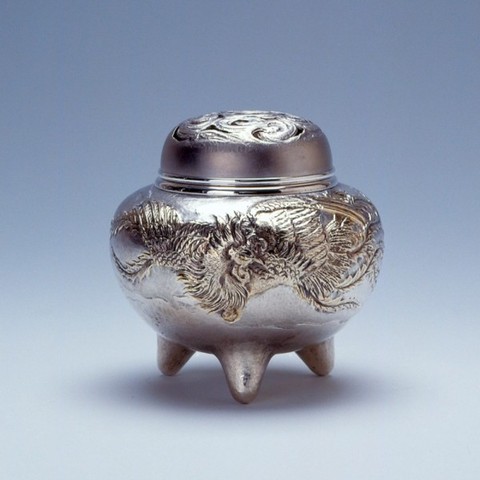
江戸時代中期に、彫金師の彫刻する器物の生地の作り手として、銀師(しろがねし)と呼ばれる銀器職人や、櫛、かんざし、神興(みこし)金具等を作る金工師と呼ばれる飾り職人が登場したことが「東京銀器」の始まりでした。
江戸でこれらの金工師が育った背景には、貨幣を作る金座・銀座の存在、また各大名が集まる政治経済、文化の中心であったことが挙げられます。

This craft began during the 18th century with the emergence of three kinds of skilled workers of precious metals. First there was the shirogane-shi, who fashioned articles that were then skillfully chased by masters of this technique; and then there were skilled metal workers who made such things as combs, hairpins (kanzashi) and the decorative metal fittings for the portable shrines or mikoshi. The gold and silver mints in Edo contributed significantly to raising the level of skills of such artisans. Moreover, Edo was the center of politics, finance and culture, and were feudal lords were required to live for long periods. Consequently, silversmithery in particular developed with their patronage. Nowadays, many fine articles are being produced, mostly to traditional patterns.
A confluence of so many skills, Tokyo silversmithery is of the highest quality, the epitome of beauty and durable besides. Also, because it is not made of a harmful substance, it can be used for so many kinds of containers, ornaments and other everyday household articles. Both wrought and chased articles are made. There are silver tea caddies, sake flasks, flower vases, ornaments and many other small household articles being made by 131 firms employing 417 people, 36 of whom are government recognized Master Craftsmen.